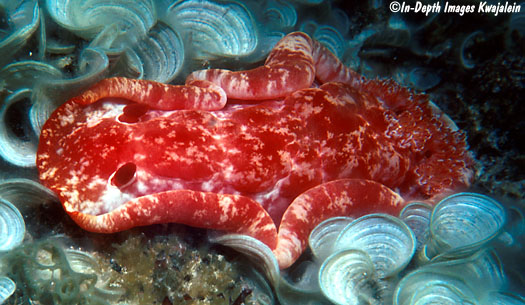
Hexabranchus is a tough group. Specimens can be found throughout the Indo-Pacific, and there is considerable variation between populations in different areas. These differences led to a number of different names being applied to variations. For some years it was thought that all of these referred to a single species (or possibly two considering the Atlantic one separate), but a recent work by TibiriÁŠ et al (2023) examining molecular data along with morphology came up with a total of five species, two of them endemic to Hawaii. The other Hawaiian species is Hexabranchus aureomarginatus, characterized by opaque white blotches dorsally and a distictly yellow mantle margin. In addition to coloration and DNA, the egg masses of the two species are very different in appearance and there appear to be differences in behavior.
This species is common in Hawaii and grows to a larger size than H. aureomarginatus. It is most often found exposed on the reef at night, although small specimens may be found exposed during the day in tide pools. The first photo below was taken in a tide pool at Makapuu Point, Oahu. The egg masses of this species can be seen on Sea Slugs of Hawaii.

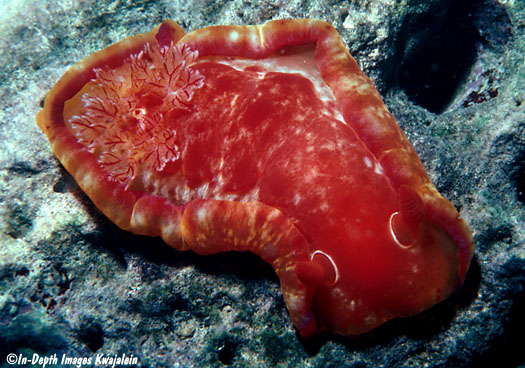
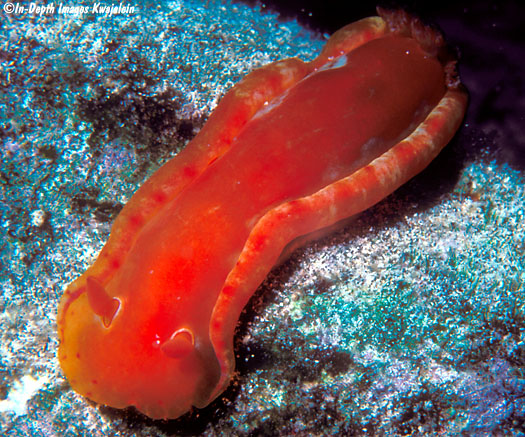
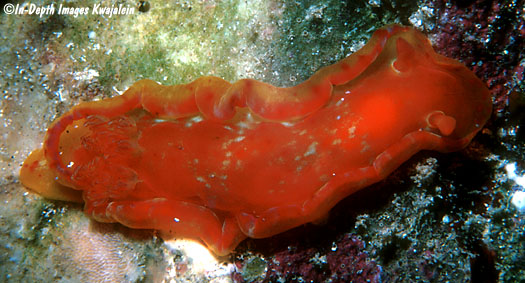
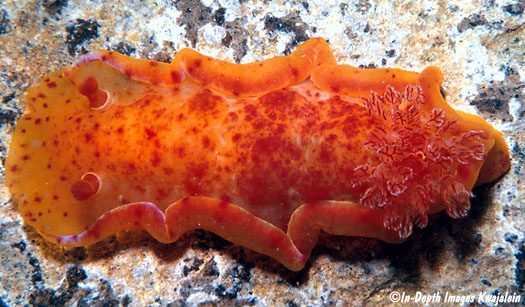
Juveniles usually bear spotting, which disappears as the animal grows.
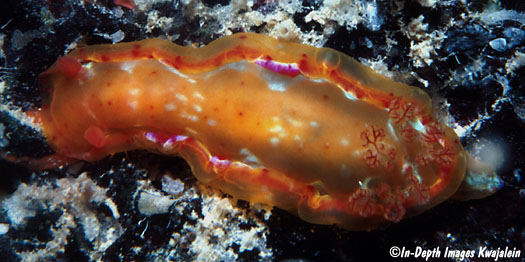
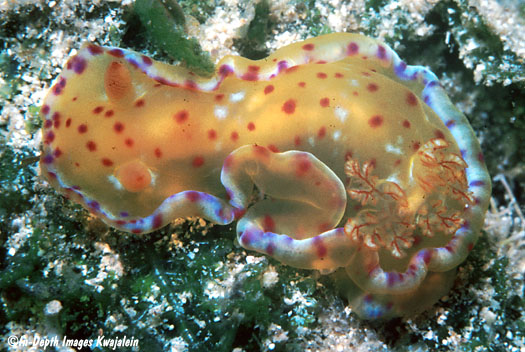
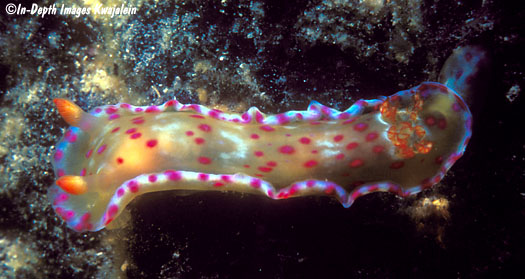
Hexabranchus is given the common name Spanish Dancer for its behavior of unrollling its wide mantle margin and undulating through the water as it swims.
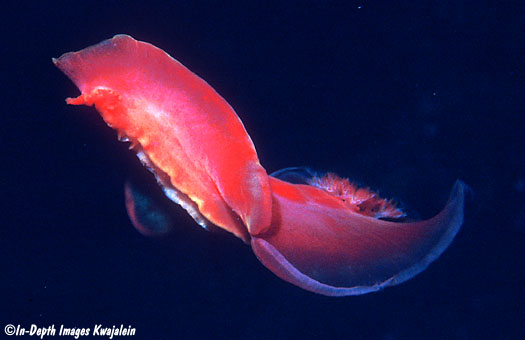
Often you can see one or two of these little commensal shrimp, Zenopontonia rex , living on the body of a large Hexabranchus.
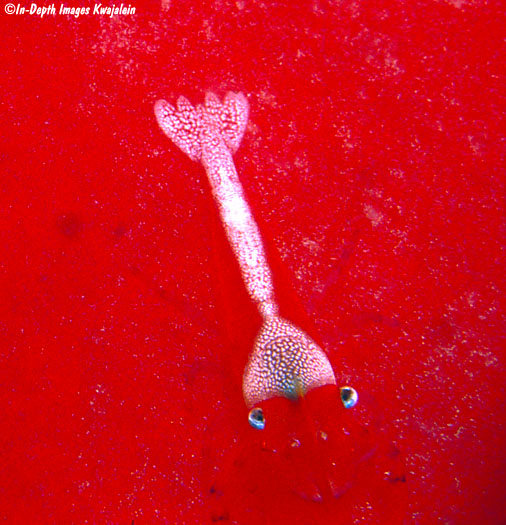
Created 20 April 2009
Updated 30 June 2023